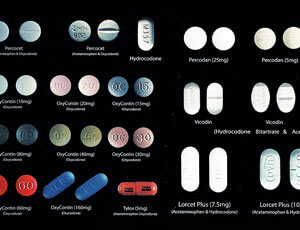What are opioids?
Opioids consist of opium, opium derivatives and semi-synthetic substitutes. Prescription opioids include OxyCotin, Vicodin, oxycodone, hydrocodone, codeine, morphine, methadone and fentanyl.
Common names include M, Morph, OC, Ox, Oxy, Oxycotton, Percs, Dope or Painkillers.
What do opioids look like?
Prescription opioids come in various forms including tablets, capsules, skin patches, powder, oral/injectable liquid form, syrups, suppositories and lollipops.
How are opioids abused?
Prescription opioids are the most abused medicines today. Almost 30 million people in the U.S. have used prescription pain relievers for non-medical purposes.
How do opioids affect a person?
Opioids produce a short-lived, intense euphoric experience by reducing pain, stress, tension and anxiety. Excessive use of opioids can cause hallucinations, breathing difficulties, high blood pressure, heart palpitations and excessive sweating.
What are the health effects/risks of using opioids?
As the effects of opioids subside, a user can become anxious, paranoid and aggressive. This leads to higher, more frequent doses or excessive consumption of alcohol and other drugs. A large single dose of opioids can cause severe respiratory depression or death.
In addition to addiction, long-term use can cause permanent damage to both the central nervous system and brain. Withdrawal symptoms include restlessness, drowsiness, nausea and dizziness.


